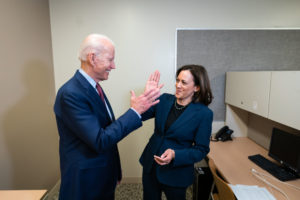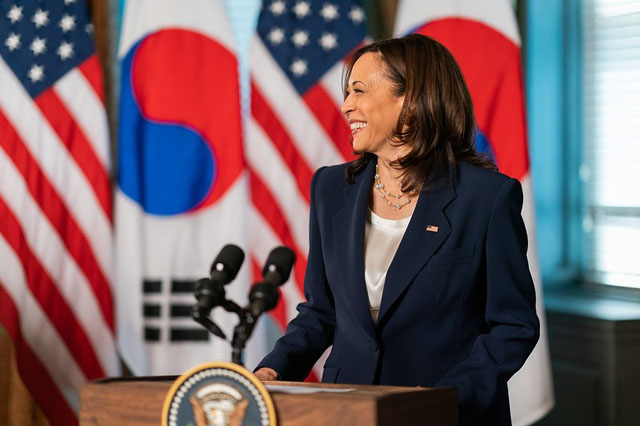
Kamala Harris and the Rise of Indian-Americans
An American phenomenon
[dropcap]T[/dropcap]he anointment of Kamala Harris as US vice president has given 4.1 million Indian-Americans a new sense of self and of changing dynamics, with their community coming into its own and becoming a force to be reckoned with. So it’s no accident that a new book hitting the bookstores is titled ‘Kamala Harris and the Rise of Indian-Americans’ and brings in several thought-leaders to share their take on this phenomenon.
‘Kamala Harris and the Rise of Indian Americans’ documents the dramatic journey of Indians in America in all aspects of business, medicine, academics and politics. There are 16 essays by noted names from various fields painting a definitive portrait of a community which from being an outsider has not only moved to a place at the table but has also in many ways become a big player and leader in the American landscape. While the community has often tripped on the model minority stereotype, it is a people that have overcome many hurdles and broken into new and diverse fields.
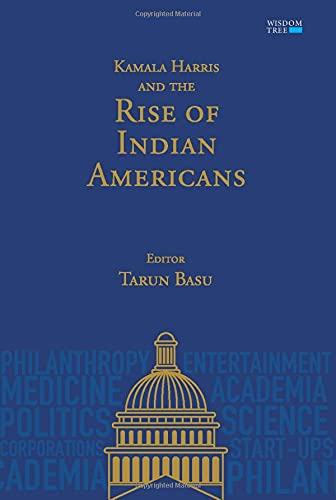
[dropcap]I[/dropcap]n a chapter on the impact of Kamala Harris, journalist Aziz Haniffa comments on the changing face of America, “With the black-American/Indian-American Kamala Harris connection and the Jewish-American second gentleman, and Biden being only the second Catholic after President John F. Kennedy to be president, it may not matter in the future whether one is sworn in and takes an oath to the US Constitution on the Bible, Bhagavad Gita, Torah or Quran. And now Indian-Americans and African-Americans can look forward to celebrating Christmas, Diwali, Kwanzaa, Hanukkah, Eid and Baisakhi with equal gusto and togetherness in a multifaith, pluralist America.”
The book, published by Delhi publisher Wisdom Tree, is edited by Tarun Basu who heads the Society for Policy Studies, a think tank running the South Asian Monitor – a resource and policy forum for South Asia. ‘From Struggling Immigrants to Political Influencers: How a Community came of Age’ is his contribution and he recounts the long and hardy road of immigrants in America. He notes, “It was said that successful ethnic lobbies were those with an ‘elevated’ socioeconomic profile like high education levels, good communicating skills, deep pockets with generous contributions to campaign funds, and Indian-Americans ticked on all these boxes as they grew in size, stature, and influence, becoming in effect the newest kid on the block.”
It is interesting that this book is written not by outsiders but by members of the community – diplomats, academics, activists and journalists who have had first-hand interaction with the community, such as Ambassador TP Sreenivasan, former UN Under-Secretary General Shashi Tharoor, Pradeep Khosla, Chancellor UC San Diego, Deepak Raj, the chairman of Pratham USA and the India Philanthropy Alliance, former Ambassador Arun Singh, business leader Raj L. Gupta and several other thought-leaders.
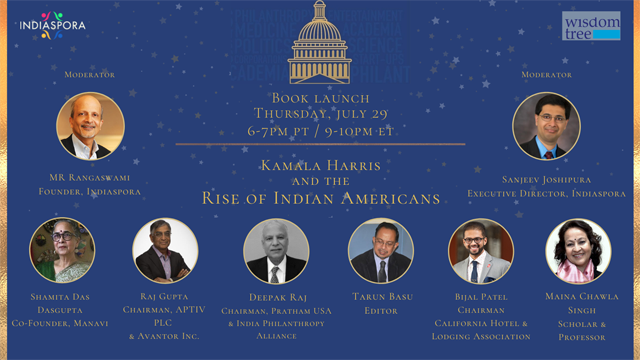
[dropcap]A[/dropcap]s Shashi Tharoor recalls, “A generation ago, when I first traveled to the US as a graduate student in 1975, India was widely seen as a land of snake charmers and begging bowls – poverty marginally leavened by exotica. Today, if there is a stereotypical view of India, it is that of a country of fast-talking high achievers who are wizards at math and who are capabale of doing most Americans’ jobs better, faster and more cheaply in Bengaluru.
Today ‘IIT’ is a brand name as respected in certain American circles as ‘MIT’ or ‘Caltech’. If Indians are treated with more respect as a result, so is India, as the land that produces them. Let us not underestimate the importance of such global respect in our globalizing world.’”
In ‘A Community Zooms into Political Spotlight’, scholar Dr. Maina Chawla Singh traces the trajectory of the community into the political limelight from the early days of Sikh farming communities of the late 19th century to the current new generation of Indian-Americans.
She writes, “The trends in 2020 have revealed high levels of political ambition among Indian-Americans. Electoral candidates and advocacy groups have managed to galvanize the community despite the constraints of a Covid year of lockdowns.” She points out that 50-70 candidates ran for electoral office and tirelessly connected with their constituents. “This energy to have a voice in politics will only deepen in the years to come, especially among the US born generation of desi politicos. Harris’ story is only a milestone in that journey, not a destination.”
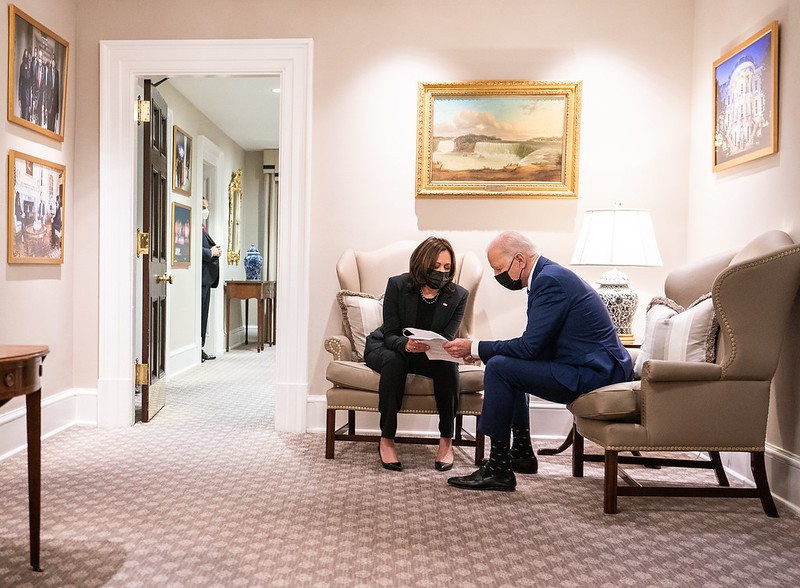
[dropcap]M[/dropcap]R Rangaswami, the tech entrepreneur and investor, shares his insights into Silicon Valley: “Almost one in twelve US startup founders is now a member of the diaspora. About one in seven Silicon Valley startups has an Indian founder.” While talking about his own adventures as a Silicon Valley entrepreneur, he paints the larger picture of the emergence of Indian ‘unicorns’ – startups with a value of $1 billion. He says, “That’s the beauty of Silicon Valley: the hope and excitement of innovation and disruption. There might be no other place on Earth with the power to reinvent itself – and the world around it – with startling regularity.”
Rangaswami is also the founder of Indiaspora, a nonprofit which helps to harness the success of Indian-Americans into giving back to the community, be it in the US or India. A collaboration with varied leaders from different fields has led to recognition and political clout for the community.
As he cautions, there are many challenges to meet, for in this success story there are still a quarter million Indian Americans who live below the poverty line, and it is estimated there are over 400,000 undocumented Indians who are in the United States.
Indeed this story is by no ways complete unless we look at it with a clear-eyed evaluation of how far we’ve come and how far we’ve got to go. The picture cannot be seen through rose-colored glasses as there’s still so much that needs fixing in the community.
Dr. Shamita Das Dasgupta, co-founder of Manavi, a non-profit which addresses violence against women in the South Asian community, and Sujata Warrier, Chief Strategy officer for the Battered Women’s Justice Project, share their thoughts. As they emphasize, this mainstream model of success has noticeably excluded marginalized communities, communities such as women, LGBTQ and the working class, the educationally non-conformists who don’t fall into the doctor, engineer, category, and the poor.
They write: “Success, as it is defined and celebrated in the diasporic community of Indians in the US – economic and individualistic – is narrow and elitist.” In a recent virtual panel discussion for the book launch, Dasgupta said: “We interrogate our community’s image of success and use the trope of battered women and sexually assaulted women’s organizations to discuss success, and we look at success through the lens of the marginalized.” Dasgupta and Warrier challenge the community to do better by the overlooked and forgotten members – and surely that will only help enhance the success of all Indian-Americans.
(This first appeared in my weekly column India in America in CNBCTV18.com)
Related Articles:

Kamala Harris: “You are never too young or too old to be a leader.”

Kamala Harris – A Lotus Takes Root in America
